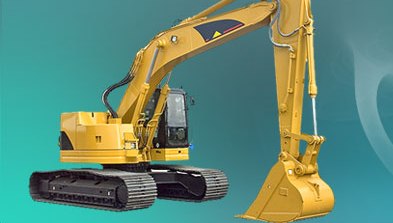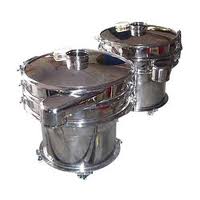 of rp_featop.jpg)


In terms of mechanical mixing mechanisms, a number of actions are employed by different types of mixers to create different effects for particular process results. For distributive action, swirl created by rotating parts causes laminar thinning of the material interfaces, thereby increasing volumetric combination of the materials. A repeated cutting and folding action of the mixture also increases the distribution of different material components. The effectiveness and efficiency of a mixer in distributive mixing is therefore a function of how the machine interacts with the fluid in a geometric sense.
Conversely, the effectiveness and efficiency of a mixer in dispersive mixing is a function of how the machine interacts with the fluid in a stressing sense. For most materials, the higher the stress, the smaller the resulting particles or droplets in the mixture. However, another very important consideration is the uniformity of the stress field. Without a reasonable uniformity, it is impossible to guarantee that the same stress is applied to all parts of the fluid. This would result in a wide range of final droplet or particle sizes rather than a narrow range obtained with uniform stressing. One or more of the three primary stressing mechanisms are used in most fluid mixers.These mechanisms are:
Usually called "high-shear mixers", are the most common form of Dispersing/Homogenising/ Emulsifying mixer. By placing a form of closely-fitting shroud around a high speed impeller, it is possible to create a shearing action between the blades and stator shroud. As material is centrifugally pumped through the mixing head, some of it will see this high shear zone and experience shear stressing that results in dispersive mixing. Where small or uniform dispersions are required, material must be cycled through the head many times to ensure statistically that all of the material has passed through the high shear zone at leastonce. PUMPING ACTION : Because of indigenous design & rotor operating at very high speed in close clearance with stator draws the material in & imparts mechanical & shearing actions. Inline Homogenizer facilitates high volume, non positive action which is sufficient to transfer the material without any supplementary pumps but in some cases because of high viscosity, vertical lift or length of pipe line , the flow rate may come down below the anticipated value, In that case it is supplemented by an auxiliary pump installed in the system which pumps the liquid without reducing the homogenising/emulsifying efficiency of the system. END CONNECTION : The inlet & outlet are normally fitted with . DIN, Tri Clover/ Sanitary Screw fittings but other Modes of fittings can be provided on request. SEALING : Single mechanical seal with Carbon, silicon carbonized phase combination is provided. Special single or double sealing is also available for conditions & process which demand it eg. Latex , Abrasive solids. APPLICATION OF INLINE HOMOGENISER/EMULSIFIER RECIRCULATORY PROCESSING : PREMIX PROCESS : Inline Mixer is currently in use in the industry listed below & this gives a new horizon for this exceptional machine to validate its results.
CAPACITIES AVAILABLE :
|

Vibro Separators are circular unitary gyratory screens used to separate mass composition of solids from solids, and for gradation of materials as per particle size, having wide range applications. The structuring of the machine has been designed in order to achieve the multiple plane vibration by suitable assembly of the specially designed Vibratory motor (constructed for this purpose) having eccentric weight at the top and bottom ends of the motor shaft. The motor is mounted vertically at the centre of the screening assembly, on a circular base by means of springs which allow the Unit to vibrate freely. The springs absorb the vibrations and prevent them to be transmitted on the floor. The top weight causes vibration in the horizontal plane which causes the material to move across the screen towards the Periphery. The lower weight acts to tilt the machine which causes vibration in the vertical tangential axis. The angle of lead of the lower weight with relation to the upper weight provides variable control of the screening pattern. Thus the material moves across the screen and also in the vertical and tangential planes enabling maximum screening. FEATURES :
Documentation
The Unit Consists of
Options Available
Specifications
|